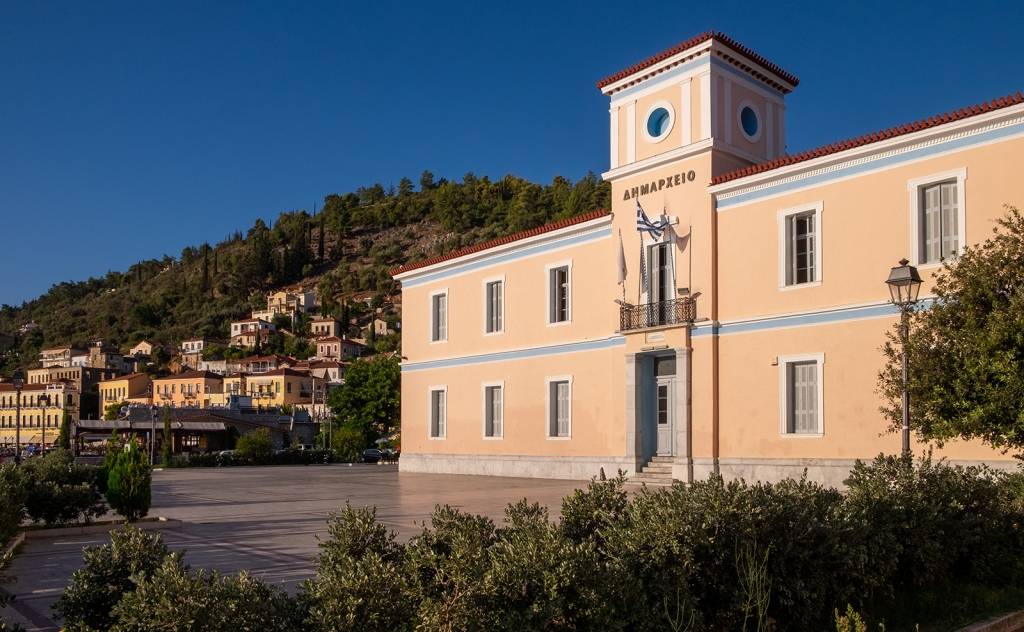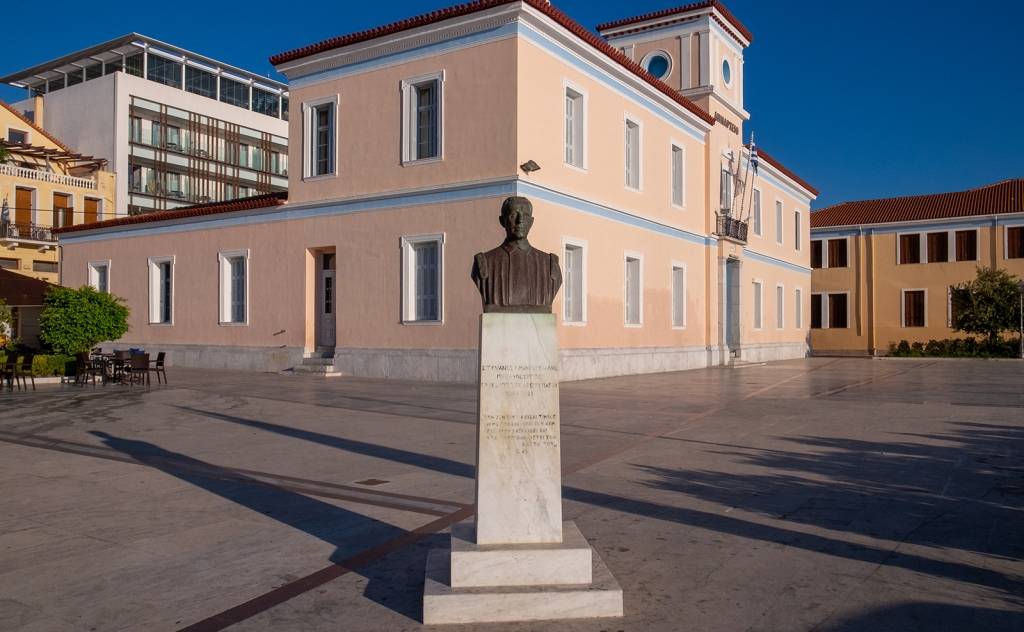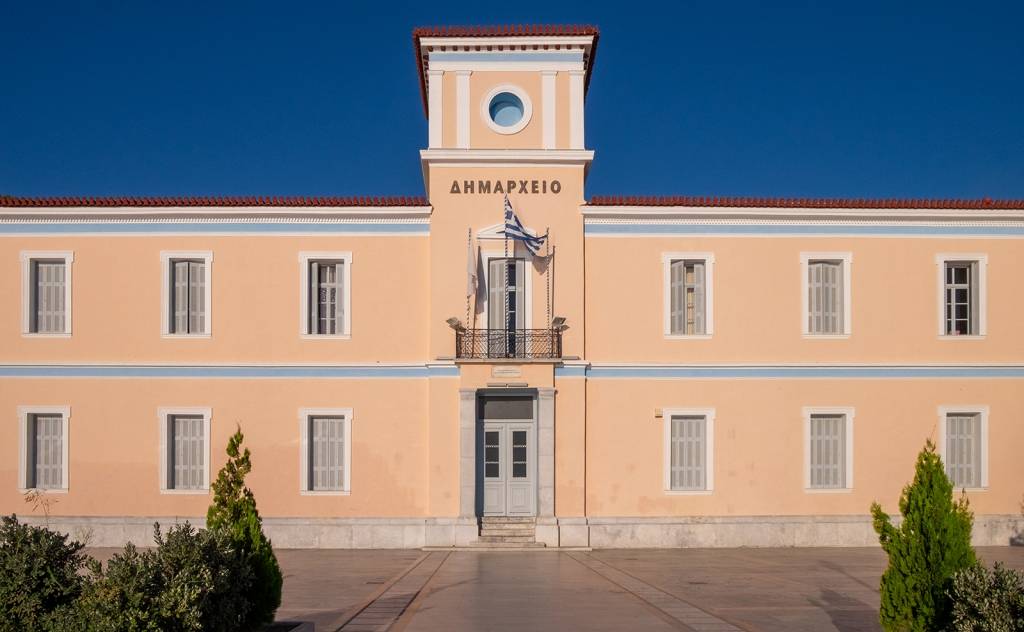Gythio Town Hall - Archeological Collection
Gythio Town Hall is located at a square near the beach, opposite the port. It is a two-storey neoclassical building built in 1891 by the city's reformer, Mayor Basilis Kalkandis, and it is a piece of work of the Bavarian architect Ernst Ziller. The whole building has stone-plated walls and tiled roofs, with its main feature being a square tower that protrudes from its view and is raised with a third floor. In the past, in addition to the City Hall services, the First Instance Court, the Middle School of Commerce and the Night Gymnasium were housed in this building. It has been described as a historical preserved monument because it is a sample of neoclassical architecture from the late 19th century.
The Gythio Town Hall houses the Archaeological and Byzantine Collection of the Archaeological Museum. The original core of the collections was set up eighty years ago, with the help of some philoancient Gythians, and the exhibition grounds were organised in 1980. Visitors can see findings from excavations in Gythion and Mani, such as relief sculptured bοne cases, inscriptions, pottery and sculptures of Roman times etc.
Exhibition material includes the following collections:
- From the ancient city of Gythio: excavation findings, collections of various findings and donations.
- From Laconian Mani (Gythio and Itilo provinces): antiquities from field research.
- Collection of inscriptions with texts on the political and social history of the region during the period of the Roman rule.
The most important exhibits of the Archaeological Collection are:
- [No. Museum 130]. Column topped with a ram's head. This is the zoomorphic representation of god Carnio [Apollo]. It dates back to the Archaic period and comes from the ancient city of Las (settlement of Chosiari, Mani).
- [No. Museum 87]. Relief fragment of the so-called "Laconian heroic reliefs" depicting a throne sited figure and an upright worshiper. It dates back to the Archaic period and comes from the ancient city of Las (settlement of Chiosari Mani).
- [No. Museum 123]. Relief offering to a god healer depicting the foot from the middle of the thigh to the foot with the inscription [...] SAVED. It dates back to the Late Hellenistic period (3rd century BC) and comes from the New Town or Town of Tainaron (present-day settlements of Alika and Kyparissos Mani).
- [No. Museum 120]. Portrait of philosopher Epicurus. It is a copy of a 4th century BC piece of work and dates back to the Roman period.
- [No. Museum 47]. Sacred Law, which refers to the Gythian “Caesarea Feast” (in honour of the Julius Emperors), and Euryklia (in honour of Gaius Julius Eurycles and his son). It dates back to 15 AD. and comes from Gythio.
| MONDAY | 07:30 - 15:30 |
| TUESDAY | 07:30 - 15:30 |
| WEDNESDAY | 07:30 - 15:30 |
| THURSDAY | 07:30 - 15:30 |
| FRIDAY | 07:30 - 15:30 |
| SATURDAY | CLOSED |
| SUNDAY | CLOSED |






